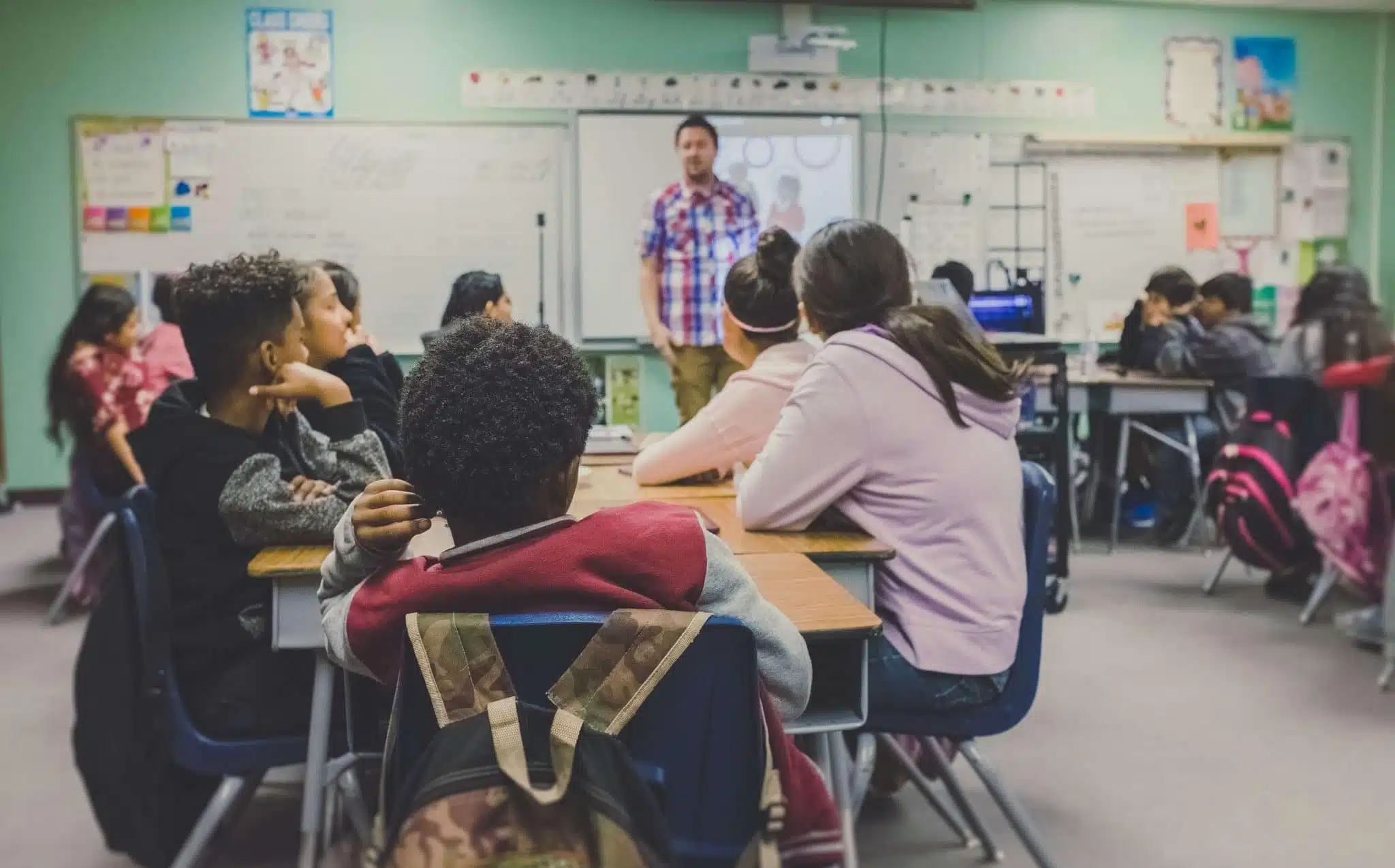What Is Scaffolding In Education? Your Go-To Tips And Tricks
Updated: November 28, 2024

In education, there are several different ways to teach and learn. Every student has their own preferred method to absorb information. When it comes to knowledge, the general idea is that you should be able to learn how to do something new and then be able to do it independently. This concept refers to the scaffolding method of teaching. Now you may be asking, “What is scaffolding in education?”
In this article, we will break down everything you need to know about scaffolding in education. From the definition and theory, to example ways to implement scaffolding in the classroom.
What Is Scaffolding In Education?
The term scaffolding refers to a process of teaching. In scaffolding, teachers model and/or demonstrate how to solve a problem for their students. They then let the students try to solve the problem themselves by taking a step back and only giving support when needed.
The reference to scaffolding is because the teaching/learning process gradually sheds layers of assistance as students progress and absorb new knowledge.
Scaffolding: The Definition And Theory
Back in 1976, researchers David Wood, Gail Ross, and Jerome Bruner coined the term “scaffolding” in a report entitled, “The Role of Tutoring in Problem Solving.”
In building terms, scaffolding refers to a platform that is temporarily set up to aid builders. It gives them elevation and support.
In education, the mental image and symbolism is similar to grasp. A teacher acts as an “activator” who helps a student master a new concept. They use “fading,” or the process of gradually lowering their support level (or scaffolding), as a student gains hold of the new concept, process, or task.
Two years after their report, the researchers revised their theory of scaffolding. Psychologist Lev Vygotsky found that there are two important aspects to consider in scaffolding in education, namely:
- A child’s development level
- A child’s potential development level
Each child has their own level of differences between the first and the second, labeled their “proximal zone of development.” As such, scaffolding in education must target the proximal zone of development to be successful. In essence, each student may require a different level of support and fading.
General Scaffolding Process
Scaffolding in the classroom begins when a teacher explains information at the right level for his or her students to understand. Then the teacher can present a problem and solve it out loud. To explain the process, the teacher shares how he or she reached the solution by explaining or sharing images of the process.
The general ways to accomplish this include:
- Breaking a task into smaller parts
- Verbalizing the process
- Promoting cooperative learning through dialogue with peers
- Using prompts, coaching, or models
- Sharing knowledge, tips, and background knowledge

Photo by NeONBRAND
Scaffolding Strategies To Use With Your Students
Here are some ways to implement scaffolding in your teaching.
1. Show And Tell
Modelling is one of the best ways to teach because students can learn by example. In the “show and tell” method, a teacher can solve a problem out loud by walking students through the steps. You can also try a fishbowl activity, in which you can break your students into groups and place them in a concentric circle. The students in the middle of the circle can perform the activity while teaching the students in the outer school how they are doing so.
2. Leverage Prior Knowledge
For the most part, learning in the classroom resembles practical life experiences. You should try to tap into your student’s experiences and prior knowledge when teaching new concepts. This way, they can relate their learning to their lives and use problem-solving skills.
3. Talk Time
Students can better remember what they learn if they have the time to absorb it and a chance to talk about it. Break up your students into discussion groups to verbally share what they have learned.
4. Pre-Teach Vocabulary
Before introducing a new and challenging text to students, pull out any complex vocabulary. Then, take the time to teach these words with images or within a context they are familiar with. This way, when they come across new or complex terms in reading, they do not shy away from it and they have the prior knowledge to better absorb the information.
5. Use Visuals
Graphic organizers of information are guiding tools to help students process information. For example, think about creating a venn diagram when teaching compare-and-contrast essays.
6. Practice Pausing
When running a lesson, you may breeze through a lot of concepts at once. It’s important to be able to gauge how students are absorbing the information. One way to do this is to try the “pause, ask questions, pause, review” technique. Design questions in advance and then ask these questions, but give students enough time to think about them before answering.
7. Describe Concepts
By using visual aids, teachers can better explain concepts orally. At the same time, teachers can ask students to illustrate the concept themselves. This way, not only do students get a variety of ways to learn, but a teacher is also able to check in on what’s being understood.
8. Promote Success
When moving on to a new subject or a more advanced concept, teachers can first explain to students the goals of the assignment. If a teacher is able to share how this new concept builds on what a student already knows, then the students may enter the lesson with confidence and the headspace to absorb information.
Extra Tips For Application
Since scaffolding depends on a student’s proximal zone of development, it also inherently depends on a student’s age. Here are some extra tips for scaffolding in education based on grade level:
9. WPre-School
Start with some guidance and modelling. Then step away to see how a young child reacts and continue modelling based on their level.
10. Elementary School
It can begin by teaching a concept like addition or subtraction on a whiteboard. Then, a teacher can create a game by which students get to apply the knowledge. Students can work on the problems independently while the teacher offers help when needed. After they see the class has mastered the lesson, the teacher can move on to the next level of knowledge. In this case, it may be adding with three-digit numbers instead of two.
11. Middle – High School
At this level, scaffolding in instruction can be passed along to the students. For example, you can introduce a topic that is controversial, or has two points of view. You can teach the facts and then divide your class into groups that get to learn and teach about each side. Students then rely on one another to challenge and discuss points.
12. Higher Education
In a sense, online education is an example of scaffolding. Once students have a grasp on the software and method of learning, they can move along at their own pace and increase their knowledge. Students can work together or independently. At the University of the People specifically, students learn in a pedagogical model whereby peers can work together to build their understanding.
Challenges Of Scaffolding
Scaffolding can be a successful way to teach and learn, but it does have its fair share of challenges. Some challenges include:
- It requires sufficient personnel
- It can be time consuming
- If a teacher misunderstands a student’s level of comprehension, they may not position the student adequately to be able to learn a new concept
- Instructors must be properly trained
- Teachers need to give up control in fading
- Teachers may misjudge a student’s zone of proximal development

Photo by Mimi Thian on Unsplash
Benefits Of Scaffolding
On the upside, when scaffolding is done properly, there are a lot of long-term benefits, including:
- Improved comprehension
- Enhanced problem-solving abilities
- Maximized engagement by students
- A positive learning environment
- Increased collaboration between students and even students and teachers
Conclusion
Scaffolding in education is just one process by which instructors can teach. However, when it is done properly, there are many different ways to implement the strategy. Across different age levels and varying abilities, scaffolding can provide for an interactive and engaging environment to learn.


